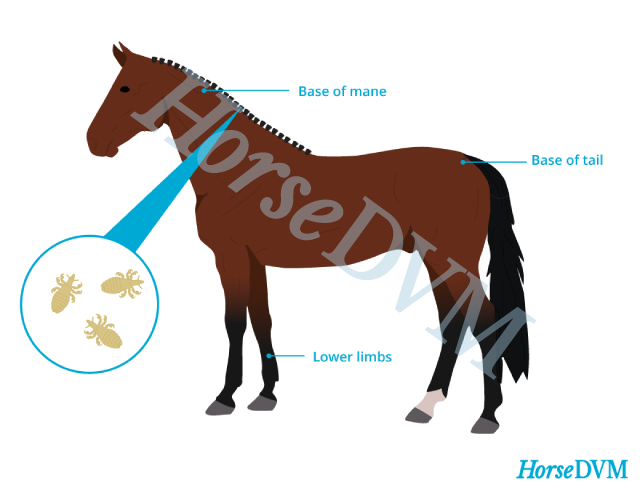Lice are rather common in horses, especially in sick, old or otherwise debilitated animals. These horses will often have a longer hair coat and patchy areas of hair loss with scaly skin. They will also demonstrate varying degrees of itchiness, ranging from non-existent to severe. Horses will most often be affected on the neck, shoulders, mane, tail, or, less often, the legs.
There are two species of lice which affect horses--the biting (
Datmalinia equi, mallophaga), and the sucking (
Hematopinus asini, anoplura) louse. It is useful to identify the species of lice prior to treatment, because the treatment is different between the two species of lice.
Hematopinus asini lice are a bit bigger than
Datmalinia equi and are easier to see on the horse. There are usually higher numbers present on the horse, concentrating in the mane, base of tail, fetlocks, and upper and inner thighs. Horses with longer hair coats tend to harbor higher numbers of lice. Clipping the horse's coat after the lice have already infested may help reduce the number of lice but isn't an effective method of treatment to rid the horse of them completely.
In order to confirm whether the horse has lice, a visual check of the hair coat can be done. It is best to perform the examination after the horse has been exercised, as when the horse sweats the lice will climb out towards the tip of the hairs. Tools needed include mineral oil, a magnifying glass, ear forceps, and a flea-comb. Applying a small amount of mineral oil on the flea-comb, then combing through the hair coat, will cause the lice to stick to the flea-comb.
Transmission
Lice are easily spread by close contact with other horses, or from sharing brushes or tack.

